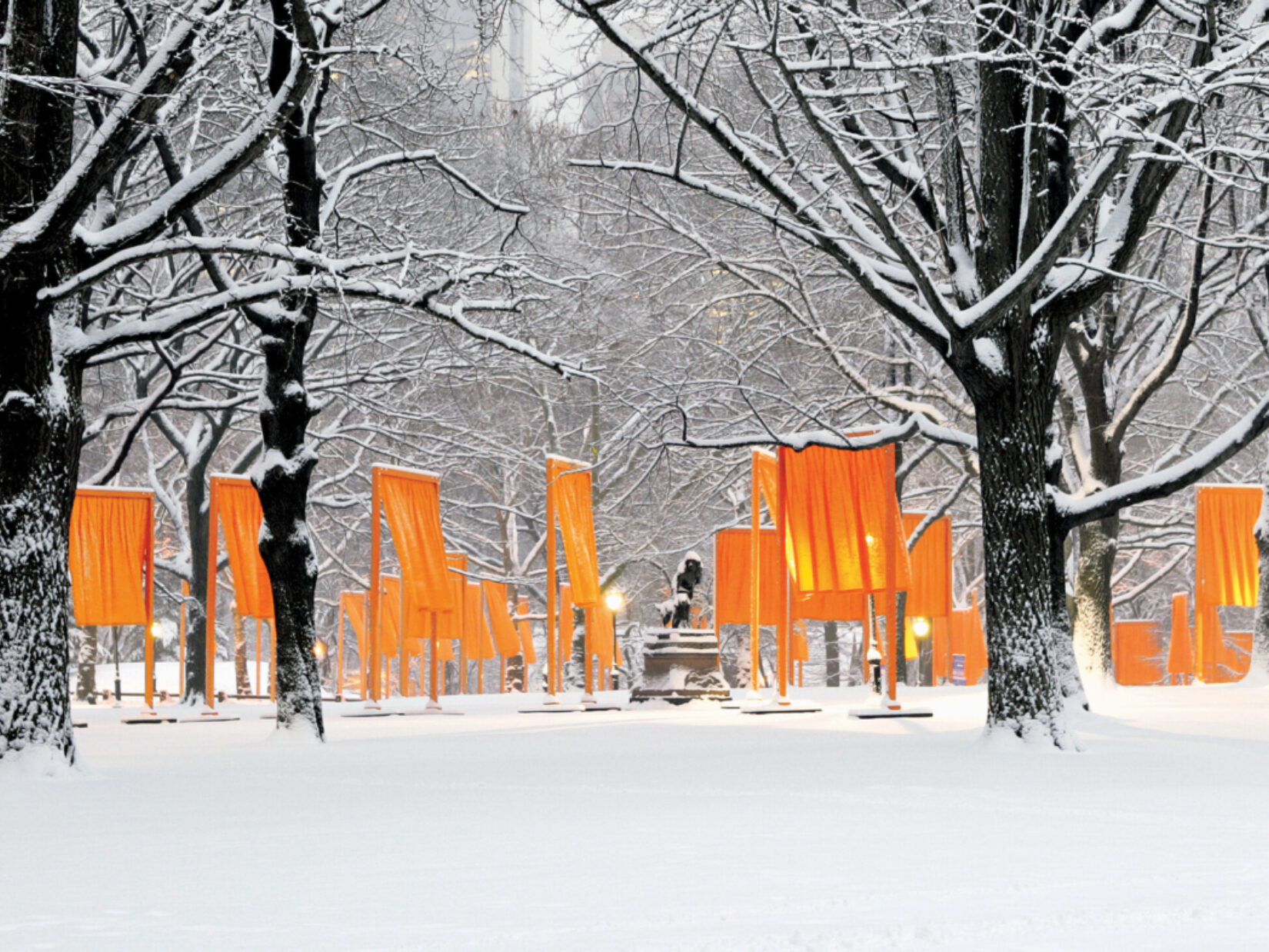Magazine
A ‘Beautiful View’: The History of the Belvedere

When the Belvedere opened 150 years ago, it provided visitors with some of the most sweeping views of Central Park and the city beyond. Park co-designers Frederick Law Olmsted and Calvert Vaux wanted to create a space where visitors could enjoy the Park landscape; in 1866, they designed a terrace that included pavilions and a whimsical, open-air miniature castle at the edge of the old Receiving Reservoir.

Olmsted and Vaux designed the Belvedere as a folly—not a functional building, but a playful open-air structure from which visitors could view the Park landscape.
They named the folly—a decorative structure with no functional use—the Belvedere. Italian for “beautiful view,” the Belvedere’s purpose was to offer just that. It replaced an old bell tower used by the reservoir—a structure so ugly that Clarence Cook, an influential art critic and columnist for the New York Herald Tribune, called the spot an “eye-sore.”
The Park Needs Us
Central Park is New York City’s backyard—and it needs all who visit to get involved in its care. Find out how you can help keep it a vital public treasure and thriving habitat.
When construction on the Belvedere began in 1867, Olmsted and Vaux transformed that eyesore into what they described as “a picturesque structure,” adding that it would be “the focal point of the view from the Mall and the Terrace.” From that distance, the Castle’s fantastical design would draw visitors to the site, where they would then be rewarded by the beautiful views. Perched atop Vista Rock, the second highest point in the Park, the Belvedere was a sight to look at—and look out from.
Then & Now: Belvedere Castle
When the Belvedere opened in the early 1870s, visitors embraced the spot. Guidebooks and postcards lauded the stunning views, directing tourists to visit: “From here the Park may be seen spread like a panorama at your feet.” The eye was sore no more.

By the end of the 1800s, the Belvedere was featured in guidebooks and on postcards. This postcard refers to it as “The Observatory” because of its use as a place to view the Park. Courtesy of the New York Public Library
The beautiful view in decline
Over the 20th century, the “picturesque structure” diminished in beauty.
In 1919, the U.S. Weather Service moved into Belvedere Castle, using the structure as a place to collect weather data. For the first time in its 50–year history, the folly was now functional. This came at a great cost: Belvedere Castle was closed to visitors. Windows were sealed, doors were added, and the conical tower at the top was removed for data-gathering antennae.
By the 1960s, the U.S. Weather Service had automated measurements and the Castle was empty. Left unattended, and with New York City on the edge of bankruptcy, the Belvedere fell prey to vandalism and graffiti in the 1970s. The view was anything but beautiful.

With no one inside Belvedere Castle and limited funds for Park management, the structure fell prey to vandalism in the 1970s.
Restoring the beautiful view
When the Conservancy formed in 1980, the Belvedere was one of its first restoration projects. With graffiti removed and pavilions rebuilt, the Castle reopened in 1983 as a visitor center and gift shop. After another restoration in 1995, programming at the Belvedere expanded through the Henry Luce Nature Observatory to include hands-on learning activities about the animals and plants in the Park.
Our most recent restoration, completed this month, enhanced the Belvedere’s connection to its original purpose. At different points in its history, bars, shutters, and grilles have obstructed views from the Castle’s windows. Now, for the first time in a century, new, clear pane windows evoke the original open–air design.

Belvedere Castle will reopen this month after a 15-month comprehensive restoration.
Over 150 years, the landscape surrounding the Belvedere has changed—glass skyscrapers now dot the skyline and a lush green lawn replaced the old Receiving Reservoir—but the folly that Olmsted and Vaux designed “to afford a prominent place of look–out over the whole extent of the Park” continues to offer visitors breathtaking views.



